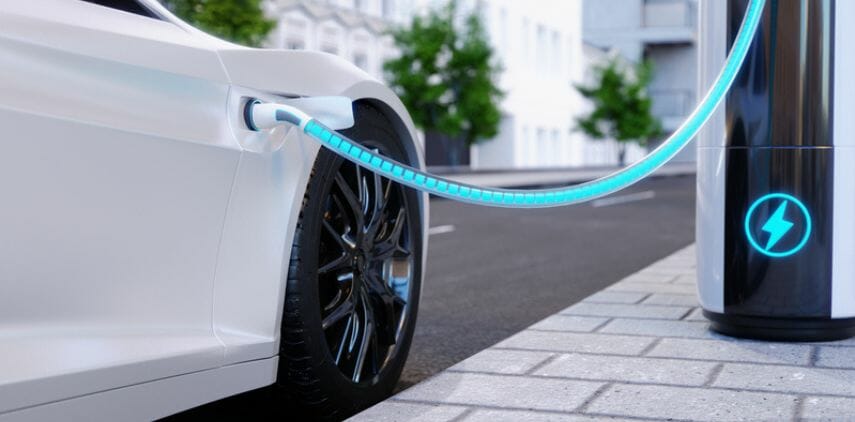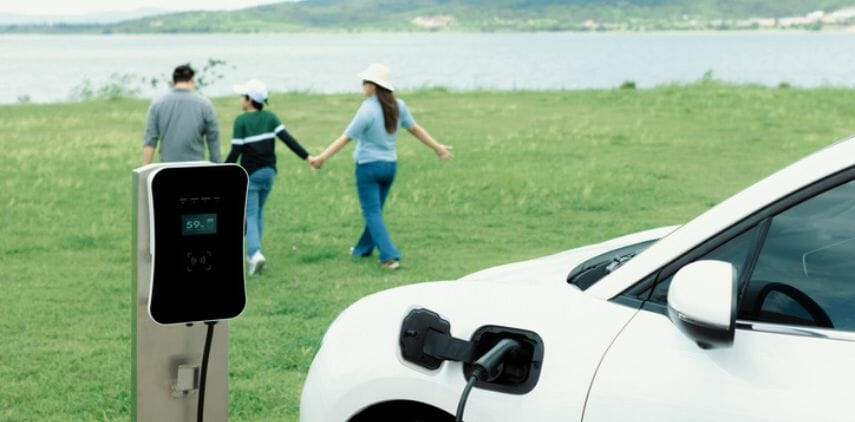Overview
Do you need to transport your bike but don’t have a car with an interior rack, or do you want to find an easy way to secure your ride while on the go? Worry no more.
Installing a good quality bike rack onto an SUV is actually simpler than you think and can be done in just a few steps. In this blog post, we’re going to guide you through all the necessary preparations and explain exactly how it’s done so that you can get back on your wheels quickly.
So, whether it’s for recreational use or for those days when biking gets crowded in town, understanding how to install a bike rack yourself will save you both time and money in the long run.
Table of Contents
How Does a Bike Rack Attach to a Hitch?

A bike rack is a great solution for those looking to transport their bicycles while traveling in an SUV. But how does it attach? Most bike racks are installed on an SUV’s hitch with ease and security.
The first step is choosing the right bike rack type for your vehicle and needs. The two main types are platform-style racks and hanging-style racks. Platforms offer stability when placed on the back of the vehicle by resting flat against it. Hanging racks, meanwhile, can be used on any size of the car as they require only enough room to hang up the wheels without touching anything else.
Once you’ve chosen your bike rack, you should secure it to your SUV’s hitch. This can be done by either bolting the rack directly to the hitch or using a specialized bike rack adapter that will attach it securely.
If you have opted for a platform-style bike rack, you must ensure its arms are firmly attached and locked before placing your bikes on it. Hanging racks should also be secured with locks once all the bicycles are loaded.
Finally, check that all straps and bolts are secure before hitting the road! Your bike rack should be able to stay in place even when driving at highway speeds, but checking everything before leaving is recommended for safety purposes.
How Do You Install a Rear Bike Rack?

Installing a rear bike rack is a relatively straightforward process that can greatly enhance the carrying capacity of your bicycle. To begin, you’ll need a rear bike rack designed to fit your particular bicycle model. Start by positioning the rack onto the rear frame of your bike, ensuring that it aligns properly with the mounting holes or brackets.
Use the appropriate bolts or screws to attach the rack securely to the frame, making sure to tighten them firmly. Some racks may require additional brackets or clamps to fasten them securely.
Once the rack is firmly attached, double-check the stability and ensure it is level. Next, adjust the rack’s positioning to accommodate your specific needs, such as clearance for the wheels or any panniers or bags you plan to attach.
Finally, give the rack a test run to ensure it remains stable and doesn’t interfere with your bike’s performance. With these steps, you’ll be ready to enjoy the convenience and versatility of a rear bike rack.
Can You Open SUV Trunk with Bike Rack?
Yes, opening your SUV’s trunk with a bike rack installed is possible. However, it all depends on the bike rack type and your vehicle’s specific model. The best way to figure out if you can open your trunk with a bike rack attached is to consult the user manual for both items.
Generally speaking, most roof-mounted racks come with a tilt mechanism that tilts away from the car allowing access to the rear hatch or tailgate. The hitch-mount racks usually feature an optional swinging arm that swings away from the vehicle’s rear end when not in use. With these types of racks, you can easily swing them out of the way when opening the tailgate or back door.
Which Is Better Roof or Trunk Bike Rack?
When it comes to choosing between a roof bike rack and a trunk bike rack, there are several factors to consider that can help determine which option is better suited for your needs. Both racks have advantages and disadvantages, so it ultimately depends on your preferences and specific circumstances. A roof bike rack offers several benefits.
Accessibility
Firstly, it keeps the rear of your vehicle accessible, allowing easy access to the trunk or hatch. This is particularly advantageous if you need to transport other items simultaneously, such as luggage or camping gear.
Additionally, roof racks can accommodate various types of bikes, including those with unconventional frames or large wheel sizes. They also provide excellent stability and security for your bikes since they are mounted on the roof, away from potential hazards on the road.
Affordability
On the other hand, trunk bike racks offer their own set of advantages. They tend to be more affordable compared to roof racks and are generally easier to install and remove. Trunk racks also have a compact design, making them more convenient for storage when not in use.
They are particularly suitable for vehicles without roof rails or crossbars. However, it’s important to note that trunk racks can obstruct rear visibility and access to the trunk, especially on certain vehicle models. They may also require additional measures to secure the bikes and rack, such as using straps or anti-sway features.
Ultimately, the choice between a roof bike rack and a trunk bike rack depends on your specific needs, budget, and vehicle type. Consider factors such as accessibility, convenience, security, and cost to determine which option is better for you.
Are Car Trunk Bike Racks Safe?
An SUV is great for taking your bike out for an adventure. But you’ll need to install a bike rack on your SUV when you’re about to hit the road. Installing a trunk-mounted bike rack is the most popular choice since it’s relatively easy and cost-effective.
But before you set up that car trunk bike rack on your SUV, there are some safety considerations to keep in mind. A poorly installed or unsuitable bike rack can cause damage to both your car and bike, so it’s essential that you take all the necessary precautions. Here are some tips to help ensure that your car trunk bike rack is safe and secure:
- Check Your Vehicle Compatibility – Before purchasing and installing a bike rack, make sure that it is compatible with your vehicle. Some racks are made for specific vehicles or trunk designs, so do your research to find the right fit.
- Make Sure the Bike Rack is Securely Attached – Use all of the provided straps to securely attach the bike rack to your SUV. When tightening the straps, pay close attention that they’re not too loose or too tight. Additionally, check periodically during your journey to ensure that everything remains in place.
- Use Wheel Straps Properly – Pay special attention when attaching the wheel straps to the bike and rack frame; if they’re too loose, it can cause damage to your bike or rack. Also, check that the straps are not too tight, which can damage your wheels.
- Don’t Exceed the Maximum Weight Limit – Ensure you don’t overload your bike rack with more than its maximum weight limit. This is usually indicated in a bike rack’s instruction manual and on its frame.
- Always Use Locks – Use good quality locks to secure your bikes onto the bike rack frame and to secure the bike rack onto your vehicle for extra protection against theft while driving or at rest stops during trips.
Is It Ok to Leave Bike Rack on Car?
It’s natural to want to leave your bike rack on your car, especially if you are an avid cyclist. But is it ok to do this? This depends on the type of bike rack you have and the size of your SUV.
If you choose a roof-mounted bike rack, it is generally ok to leave it attached for short periods. However, leaving it in place for long periods can cause damage to both your vehicle and the bike rack itself. The wind resistance caused by the roof-mounted rack may slowly affect your SUV’s structural integrity over time. Additionally, if you live in a location with extreme weather conditions, such as hot summers or cold winters, this could also contribute to wear and tear on the rack.
Trunk-mounted bike racks are generally a better option for SUV owners who want to leave their bike racks attached for longer periods of time. These types of racks attach securely to your vehicle’s trunk or hatchback, providing increased stability compared to roof-mounted racks. Plus, they can easily be removed when not in use, allowing you to store them away safely.
Conclusion
All in all, installing a bike rack on an SUV doesn’t have to be a difficult process. With the right tools and instructions, you can easily take advantage of your vehicle’s cargo space to transport your bicycles from place to place with convenience and ease.
No matter what type of rack you opt for, just remember that safety is key when it comes to transporting bikes. Be sure that the bike is properly secured before hitting the road. Ultimately, you will enjoy adding cargo room without sacrificing your vehicle’s performance. So, get out there and explore the roads ahead.






